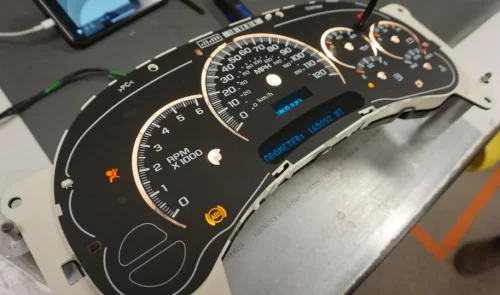When it comes to vehicle maintenance, the instrument cluster is an important component that should not be overlooked. Instrument clusters, which are usually located on the dashboard of a car, provide the driver with important information regarding the car’s performance.
A malfunctioning instrument cluster can cause a variety of issues, ranging from a loss of power to inaccurate speedometer readings. As a result, it is important for drivers to understand the basics of instrument cluster repair in order to ensure their car is in proper working condition at all times.
This blog post will cover the basics of instrument cluster repair, from diagnosing the issue to performing the necessary repair. We will also provide insight on the cost associated with instrument cluster repair and the benefits of having this component regularly serviced. Ultimately, this blog post provides a comprehensive look at instrument cluster repair, so you can make an informed decision if you ever find yourself in this situation.
Contents
1. Identify the issue with the instrument cluster
The first step to troubleshooting your instrument cluster is to identify the issue. This can be done through careful observation and experimentation. First, turn on the ignition switch and observe the various lights and gauges.
Are they all lighting up? Do they flicker or appear to be malfunctioning in any way? If so, make a note of which ones and how they are behaving. Next, try operating various features and functions to see if they respond correctly. If they do not, this is the issue that needs to be addressed.
2. Remove the instrument cluster from the dashboard
Removing the instrument cluster from the dashboard is the next step in instrument cluster repair. To do this, the first thing you should do is disconnect the battery. Before working on any electrical wiring, it is important to disconnect the battery to avoid any potential damage.
Once this is done, locate the screws that hold the instrument cluster in place and remove them. Then, carefully pull the instrument cluster out of the dashboard. Care should be taken while removing it, as some vehicles have wiring that still needs to be disconnected before the instrument cluster can be completely removed.
3. Diagnose the problem
Before you can begin any kind of repair, you must first identify the problem. Many times, a faulty instrument cluster may be the result of a simple wiring issue or a blown fuse. If you are unable to determine the cause of the problem, a service manual can help you diagnose the issue. you can also take your car to a mechanic to diagnose the problem. In some cases, a professional can quickly identify the cause and recommend the best course of action.

4. Replace the faulty components
After removing the instrument cluster from the vehicle, the next step is to replace the faulty components. Start by identifying the faulty parts and then source the correct replacements.
In some cases, you may need to take the part to a professional for a more accurate diagnosis. Once you have the correct parts, carefully remove the old parts from the board and replace them with the new ones. Make sure the new parts are securely in place before testing the instrument cluster.
5. Reinstall the instrument cluster
The fifth step in instrument cluster repair is the reinstallation of the instrument cluster. This is a fairly simple process and requires a few basic tools. First, disconnect the negative battery cable to ensure safety. Next, remove the bolts that secure the instrument cluster in place and carefully lift it out of the car.
Unplug any wiring that is connected to the cluster and use a soft cloth to wipe away any dust or dirt. Next, plug the wiring back in and then carefully place the cluster back into the car and secure with the bolts. Finally, reconnect the negative battery cable.
Conclusion
In conclusion, it is important to remember that instrument cluster repair is necessary in order to keep your car running at its best. Even if you may not experience any noticeable symptoms, the underlying issues can cause significant damage if left unaddressed. If you notice any warning lights or other signs that there may be a problem with your instrument cluster, be sure to seek professional help to ensure that your car is safe and performing at its best.
Read more: Please visit our website radiofollow.me for more information.




